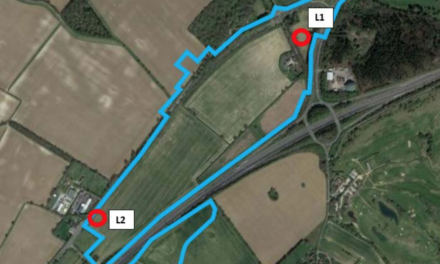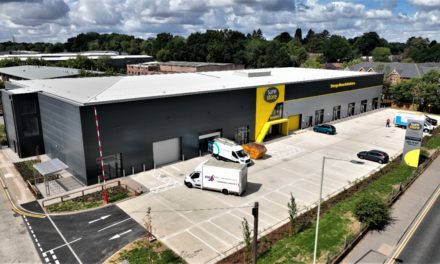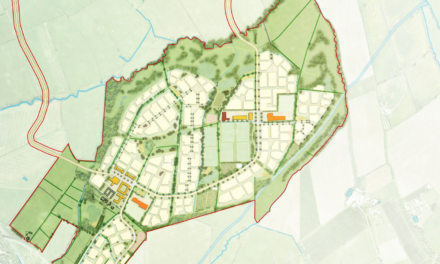Project director for Bulb Interiors, Andrew Squires, balances the needs of occupiers to socially distance while optimising their business space.
It’s difficult to imagine a corporate property strategy that hasn’t been reviewed and amended several times over the last few months.
For some this has been focussed, purely and understandably, on how we get back to business safely, aligning business risk, growth expectations and ever-changing parameters from Government. Don’t throw those two metre signs away just yet!
We have written a series of articles about how, throughout this process of change, there are ways we can continue to be mindful of sustainability in office fit-out. Other articles will look at culture and social purpose, supply chain and product circularity, planning and processes to ensure we get it right first time and select the right building systems and products.
The effects of the pandemic have been catastrophic but maybe there are a few positives, such as the collaboration to make some amazing healthcare facilities operational so quickly, the NHS’s stunning performance when confronted with an impossible scenario, communities pulling together and worldwide collaboration to understand, control and hopefully, eradicate the virus.
It will be interesting to see if there are any lasting behavioural changes. Perhaps tolerance, understanding, listening and kindness may make a comeback and, if we get it right, there may be the chance to enjoy fresher air, quieter roads, clearer water and brighter skies.
Moving forward, a successful and sustainable fit-out will be a combination of many things but data is sure to become a key influence.
We will talk, in a later article, about culture and how this should be led from the top, understood by all and be intrinsic to any fit-out project.
It is, however, puzzling that in a world full of data, where people spend the day analysing the life out of everything we do, that so little exists about major business assets including employees and the buildings they work in.
So is that asset really performing? Are we getting a return on the investment we made? Who really knows?
Space optimisation software systems have been adopted by many of the forward thinking businesses over recent years, arguably to allow those assets to be ‘sweated’ in the most efficient way – more bums on less seats, space saved, less to build and manage – but it’s never that straightforward.
Traditionally, optimisation has been the perfect tool to understand how your business uses its space. Prior to planning any proposed refurbishment or relocation, why wouldn’t you want to understand how you use your building?
Studies consistently show true occupancy levels in most businesses (pre-Covid) sat at around 60-70 per cent, yet often an occupier which has 250 desks will move into new space – and guess what? It’s got 250 desks.
Almost every other business decision we make is based on empirical data. Setting up a desk location can cost £12-15,000 per annum but optimisation can ensure you build something fit for purpose and make a dramatic dent in overheads whilst improving performance.
It always seems a big own goal when, as a design and build contractor, we are handed a brief with historic, ‘departmental’ numbers and are asked to replicate this and build vanity-focussed collaboration spaces without real consideration of the benefits the space can bring. Some earlier engagement would help us build the right space for your business.
This really isn’t about cramming everyone in, it’s about enabling flexible working styles and supporting comfort and productivity.
Modern software and reporting tools have been repurposed to provide key live data to support businesses in the challenge to operate safely as we work alongside the threat of infection.
 Having a sensor-based system at desks, in collaboration space and in meeting rooms, giving live data every 10 minutes on a system that is well managed, gives some real benefits to working through this current climate along with efficiencies in safety, time and energy. These are notably:
Having a sensor-based system at desks, in collaboration space and in meeting rooms, giving live data every 10 minutes on a system that is well managed, gives some real benefits to working through this current climate along with efficiencies in safety, time and energy. These are notably:
- Staff can have access, online or through an app, to see which desks are clean and ready for use. They can see which have been taken offline to meet distancing requirements and, as they log out themselves, their desks remain offline until cleaned.
- They can book a space near key colleagues.
- The system analytics can help compliance with the ‘test, track and trace’ directive.
- Given that there will be some challenges re-integrating staff back to work, the system gives peace of mind that an employer is endeavouring to do all that is possible to keep its teams safe.
- If you are managing a worldwide or UK-wide portfolio, it is possible to have live data for all sites at your fingertips. As we inevitably get regional lockdowns, essential meetings/teams can be relocated quickly. Well-done if you had worldwide pandemic as part of your disaster recovery plan and it has all worked.
- Current occupancy levels may mean those in the office use, at most, 20 per cent of your space. Are you heating, cooling and lighting 100 per cent of the space needlessly? Why not open just one area and save money and carbon at the same time? Systems can be manually trimmed or linked to the building management system (BMS) to further automate the process.
 Live floor plans are used to indicate which workstations are available and have not been used since the last cleaning cycle, enabling staff to choose a desk and reassuring them that the area has been cleaned.
Live floor plans are used to indicate which workstations are available and have not been used since the last cleaning cycle, enabling staff to choose a desk and reassuring them that the area has been cleaned.

When someone occupies a workstation, a red dot on the live floor plan indicates no other staff can use that desk until after the next cleaning cycle. For social distancing purposes, workstations can also be marked permanently unavailable (shown greyed out in the above floor plan) to ensure they are not used. The same solution can also be linked to your room-booking system to provide passive and touch-less check-in and release. More information here.
We believe that post-Covid, clients will be demanding substance over style and decisions will be influenced by the data – and that data will give power back to the business leaders who can plan future property strategy based on real numbers.
At Bulb, sustainability is embedded within our corporate ethics as well as being owned by all our team members who understand their responsibility to do better.
Energy consumption is the headline grabber and, yes, it is critical to reduce our carbon impact, but there are some other areas that also have a significant effect.
Over the coming weeks we will look at different post-Covid sustainability scenarios and considerations when making change in your existing or proposed workspace.
Please rate this article out of five stars below.
You can comment too, using the form at the bottom of the page.
© Thames Tap No 217 (powered by ukpropertyforums.com)













